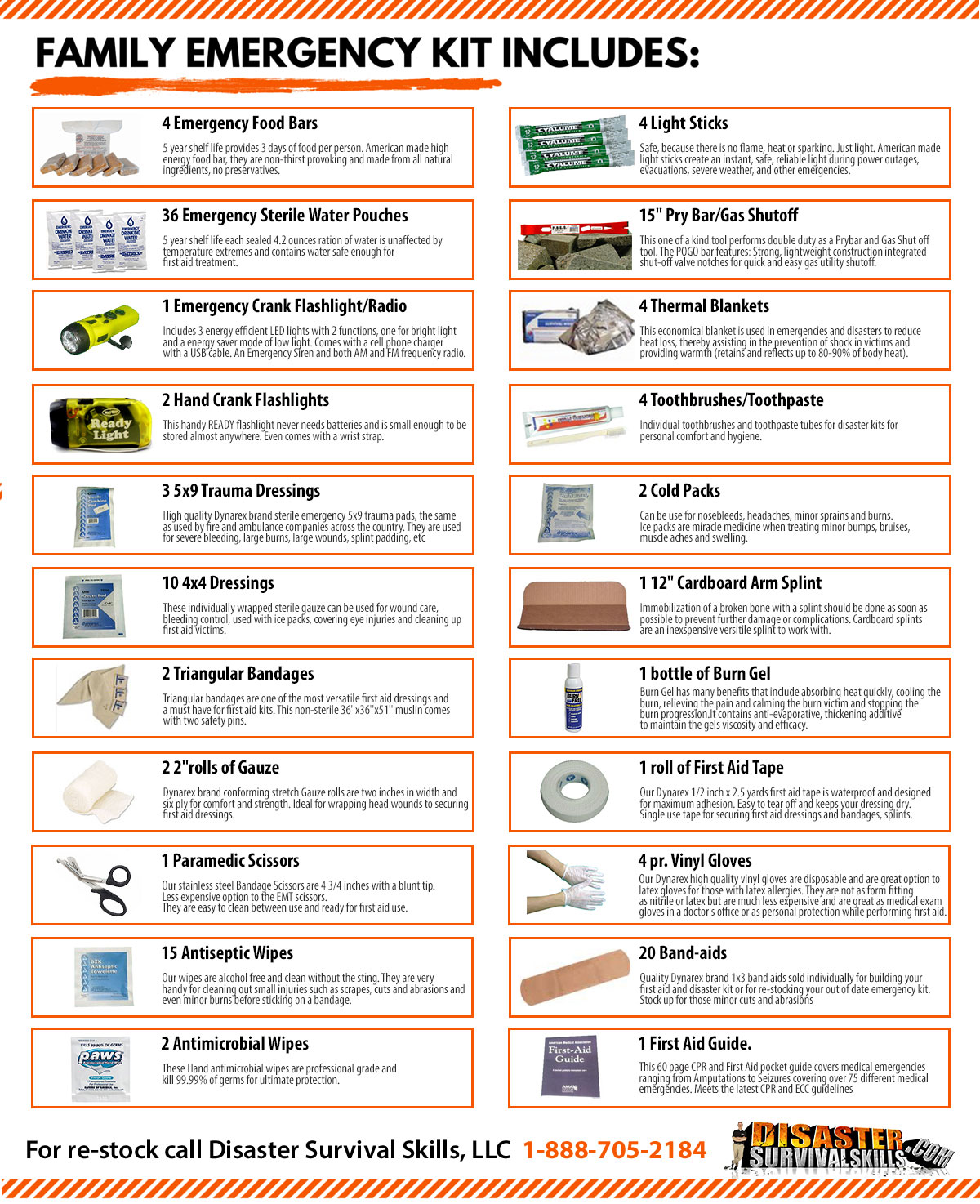First Aid Kit Is Your #1 Priority
Family Disaster Survival Kit Content List

Next is all Disaster Survival Kits should have emergency drinking water. It is generally packed in mylar pouches and the water has been purified and then sterilized. This will give your water a shelf life of at least 5 years. Because it is sterile, it is unaffected by heat and light.
Food is next on the list. Store long-term Food Bars in your emergency survival kit. Food Bars come in 2400 or 3600 calories designed to support one person for 3 days. They also have a 5-year shelf life and unaffected by temperatures up to 150 degrees. Since they are not dehydrated these food bars don’t require any water. Saving your water for drinking. They also don’t create an unnatural thirst like crackers, cheese or peanut butter might do. Don’t store food that will spoil quickly. Make your kit low maintenance.
To keep with the theme of low maintenance, make sure you have a crank radio or flashlight. This eliminates the need for batteries needing to check and tossed out each year. A radio will give you contact with the outside world to determine the extent of your disaster and what steps you may need to take next. A back up to flashlights is Light Sticks. They glow for 12 hours with no risk of fires like candles and are safe for children to handle and have a 5-year shelf life. American made light sticks perform better have a longer more reliable shelf life and are made from safer chemicals as opposed to Chinese made.
Pack emergency tools for Gas and Water Utility Shutoff. When at home, you must have the ability to control your own utilities immediately. Ignoring this problem could be devastating. Water flooding your home, collapsing second stories of homes and making it uninhabitable. Uncontrolled gas leaks can lead to fires and dangerous explosions.
These are just some of the key items that need to be in your 72 hour Family Disaster Survival Kit and your Emergency Car Survival Kit. For more information check out our Disaster Preparedness Checklist.


